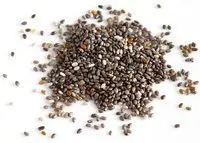Contents


Vitamin B3 is an essential element for the human body, since it is he who helps to transform food into energy. Without it, cells will not be able to develop normally and perform their function.
The substance dissolves in water, so the body cannot store it for the future, but when it is taken in excess, it easily removes the excess naturally.
Other names for vitamin B3: niacin, vitamin PP, nicotinamide (Nicotinamide) and nicotinic acid (Nicotinic acid). All of these forms are found in food.
Depending on the form in which niacin enters the human body, its effect on organs and systems differs, namely:
A nicotinic acid: in the form of a food supplement – this substance is used to reduce blood cholesterol levels, as well as to reduce the risk of developing heart disease.
Niacinamide or Nicotinamide: this form of niacin has no effect on cholesterol, but performs equally important functions. The supplement is used in the treatment of psoriasis and to reduce the risk of non-melanoma skin cancer.
Products-record holders for the content of vitamin B3
The record holder for the content of vitamin B3 is rice and rice products (rice bran and puffed rice are especially in the lead). In second place are brewer’s yeast (the richest source of all B vitamins). Next come anchovies, animal liver, chicken, turkey, pork, beef and veal, as well as many types of fish.
 Puffed rice: 35,3 mg Rice bran: 34 mg
Puffed rice: 35,3 mg Rice bran: 34 mg 33,3 mg
33,3 mg Canned: 19,9 mg
Canned: 19,9 mg Fried: 17,5 mg
Fried: 17,5 mg Fried: 14,4 mg
Fried: 14,4 mg 14,1 mg
14,1 mg Fried: 13,9 mg
Fried: 13,9 mg 13,6 mg
13,6 mg 12,0 mg
12,0 mg Fried: 10,5 mg
Fried: 10,5 mg 10,1 mg
10,1 mg 9,1 mg
9,1 mg 9,1 mg
9,1 mg 8,8 mg
8,8 mg Fried: 7,2 mg
Fried: 7,2 mg+ 15 more foods rich in vitamin B3 | |||||
Potato chips | 7,0 | Sesame | 5,8 | Espresso coffee | 5,2 |
rice bran bread | 6,8 | Trout | 5,8 | Buckwheat, bulgur | 5,1 |
Mutton | 6,2 | Bread white | 5,6 | Steamed rice | 5,0 |
Chicken | 6,1 | Pretzels | 5,3 | Pumpkin seeds | 5,0 |
Beef | 5,8 | Sardines (canned) | 5,2 | Almonds | 3,6 |
View the entire table of herbal products 300+ ➤
View the entire table of animal products 150+ ➤
Daily requirement of vitamin B3 for women, men and children
The norms in which vitamins should enter the human body are determined by specially created nutrition committees. Such organizations exist in every state. For vitamin B3, the daily rate varies between 11-20 mcg. For pregnant and lactating women, these values are higher.
Categories of people | Daily requirement, mg |
0-3 months | 5,0 |
4-6 months | 6,0 |
7-12 months | 4,0 |
1-3 years | 8,0 |
4-6 years | 11,0 |
7-10 years | 15,0 |
11-14 years | 18,0 |
Men 15-18 years old | 20,0 |
Men 19 and older | 20,0 |
Women 15-18 years old | 18,0 |
Women aged 19 and over | 20,0 |
Pregnancy | 22,0 |
Lactation | 23,0 |
Norms of physiological needs for vitamins (RF, MR 2.3.1.2432-08)
For comparison, consider the table of B3 norms in different states:
Countries | Men (mg) | Women (mg) |
Spain | 20 | 15 |
Scandinavian countries | 19 | 15 |
European Union (including Greece), Belgium, Ireland, Italy, Portugal | 18 | 14 |
Holland, UK | 17 | 13 |
Germany, Austria, Switzerland | 16 | 13 |
USA | 16 | 14 |
* TRAIN, OON | 16 | 14 |
France | 14 | 11 |
SCF/CS/NUT/GEN/18 Final 6 March 2003 «Opinion of the Scientific Committee on Food on the revision of reference values for nutrition labeling»
Factors that increase the need for vitamin B3
Labor activity, forcing a person to stay in nervous tension. An example of such professions are: surgeon, pilot, dispatcher, etc.
Living in regions with a cold climate.
Work in hot shops.
Pregnancy and lactation period.
Hard physical labor.
Irrational nutrition, in which the menu is deprived of proteins, but oversaturated with vegetable fats.
The biological role of vitamin B3 in the human body
Vitamin B3 is responsible for the conversion of food into energy, thereby facilitating the work of enzymes. It is the main component in the NAD and NADP coenzymes, which are involved in metabolic processes occurring at the cellular level.
Vitamin B3 plays an important role in the reproduction and replication of DNA. It is also directly involved in signaling between cells, and also acts as an antioxidant.
[Video] The most complete overview of vitamin B3. Subtleties, details:









